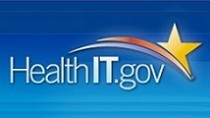
The Office of the National Coordinator for Health IT (ONC) publishes a treasure trove of resources and guides to support providers in their health IT adoption efforts. One such guide outlines a process for managing and maintaining e-prescribing.
From the ONC’s Health IT website:
[content_box type=”without-header” text_color=”dark” color=”default”]
90% of pharmacies in the United States are enabled to accept electronic prescriptions (e-prescriptions). 70% of physicians are e-prescribing using an EHR, and each state has an e-prescribing rate of 41% or above. If you are using ONC certified health IT, then you are one of the many providers nationwide with EHR technology enabled to prescribe electronically.
[/content_box]
In the guide the ONC lays out an example of a workflow for e-prescribing. The example provides commonly accepted steps, though doesn’t address who specifically in a medical practice would perform each step, or the order of completion. The steps the ONC guide recommends are as follows:
- Sign On
- Identify Patient
- Review Current Patient Data
- Select Drug
- Enter Parameters
- Authorize and Sign
- Select Pharmacy; Print or Send Rx
- Pharmacy Review and Process
- Review Alerts and Advisories
As providers review these steps, the ONC provides questions and answers to properly address workflow. For example, in Identify Patient, the guide asks:
- Question: Does your system auto populate patient demographic, prescription drug benefit (insurance) information, prescriber, pharmacy and other ancillary information, such as allergies or height/weight and the diagnosis associated with the prescription, in the outbound e-prescription message and is this routinely submitted?
- Response: Many EHR systems capture patient benefit, demographic and other ancillary information, such as patient allergy, vitals, etc., as part of the routine patient encounter process and can auto-populate data within an outbound e-prescription. Auto-population of demographic data reduces errors with patient matching, results in time savings, and thus increases prescriber productivity and efficiency. Accurate patient identification is a critical step and an important patient safety issue. Every practice should have policies and procedures for staff to assure correct patient identification. It is also equally important to ensure that the system always auto-populates the most current information in the outbound message. As a best practice, patient information should always be verified. Contact members of your clinical and IT staff or EHR vendor to discuss how they can facilitate this automation.
As you walk through the guides, the ONC suggests you ask yourself the following questions:
- What is your current e-prescribing process?
- What issues do you typically face?
- What are the current capabilities of your e-prescribing system?
Access the ONC A Prescription for e-Prescribers: Getting the Most Out of Electronic Prescribing.
